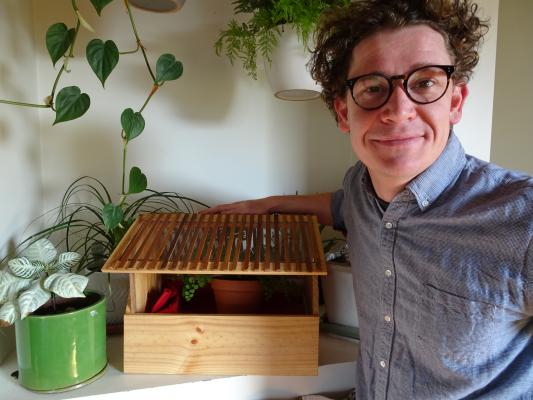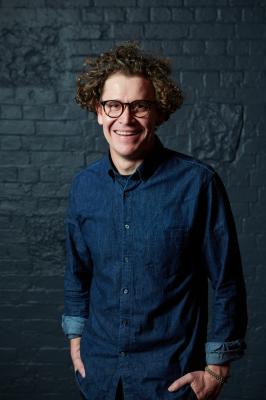National Wool Museum senior curator, Dr Luke Keogh shares his interest in Geelong’s arts and culture after winning international recognition for his article on an 1800s travelling greenhouse.
Tells us about you …
I have lived in Geelong about four years and moved here from Boulder, Colorado, after my partner got a job at Deakin University. I like to visit the ocean or Geelong Botanic Gardens. We’re so close to the ocean and world-class beaches in Geelong.
What’s your role at National Wool Museum?
As senior curator, I get to share my passion for history and objects with Geelong. I have been senior curator since mid-2019, but I have worked with council’s wonderful arts and culture team since 2018. I put on all the exhibitions and I am part of the team that looks after the collection at the museum. I also work with a team to care for council’s heritage collection. I get to share my passion for history, heritage and stories with the community – everything is enjoyable! Geelong’s arts and culture is vibrant, innovative and nimble. I am really looking forward to the things that will emerge here over the next two years.
How has COVID-19 affected you?
To be honest, not much apart from a bit of working from home and other workplace changes. Curators are always working a few exhibitions ahead of what is on show. I am still preparing us for a bumper summer!
Tell us about winning the Maurice Daumas Prize in July.
The Maurice Daumas Prize is awarded each year to the best journal article published on the history of technology. It’s open for entrants worldwide. I submitted my article ‘The Wardian Case: Environmental Histories of a Box for Moving Plants’ and was very surprised that it won the prize. The Wardian case was like a travelling greenhouse, used in the 19th century to transport plants. It was invented in 1829 by Nathaniel Bagshaw Ward and its first journey was from London to Sydney. This invention completely revolutionised the movement of plants. Our modern lives are all touched by this case. Things like coffee, tea, bananas and rubber would not be in our supermarket or on our cars today without the Wardian case. I first came across the Wardian case in 2014 when I was working on an exhibition at the Deutsches Museum in Munich. There was not much research on the case so I commenced a project on it. I have been working on a book about it ever since. I was trained in environmental science and have a PhD in environmental history, and a passion for plants. So I guess it was natural that I was drawn to the story of the Wardian case and global environmental change. There have been many fellowships and research grants along the way to help me complete the project for which I am very grateful. But the Daumas prize is a big highlight, in the field of history it is well recognised. For the project to get that sort of international recognition was really nice.
What’s something about you people might not know?
I have never owned a television.








